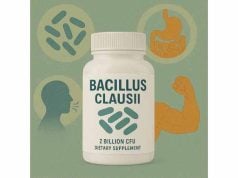
Bladderwort, a fascinating aquatic plant from the Utricularia genus, has captured the attention of herbalists, natural health seekers, and researchers for its potential health applications. Known for its tiny, bladder-like traps used to capture small aquatic organisms, bladderwort has a long history in traditional and alternative medicine. Today, it’s making a comeback as a botanical supplement, valued for its antioxidant content, possible digestive support, and unique anti-inflammatory properties. Whether you’re curious about its uses, dosing, or safety, this comprehensive guide will equip you with everything you need to know about bladderwort as a supplement.
Key Takeaways
- Bladderwort is traditionally used for urinary, kidney, and digestive support due to its unique plant compounds and mild diuretic effects.
- Contains natural antioxidants and anti-inflammatory compounds, making it an intriguing choice for overall wellness and immune support.
- May help soothe the digestive tract and ease minor bladder discomfort based on historical use and preliminary evidence.
- Safety is generally favorable, but potential interactions and rare side effects should be considered—consult a healthcare provider before use.
- Proper dosage and sourcing are essential to ensure both effectiveness and safety.
Table of Contents
- Bladderwort Introduction: Botanical Overview and Traditional Uses
- Biological Actions and Active Compounds of Bladderwort
- Bladderwort Benefits: Evidence-Based Uses and Modern Applications
- Bladderwort Safety Profile: Potential Side Effects and Interactions
- Optimal Dosage, Administration, and Best Practices for Bladderwort
- Frequently Asked Questions About Bladderwort Supplementation
Bladderwort Introduction: Botanical Overview and Traditional Uses
Bladderwort refers to a group of over 200 carnivorous plant species in the genus Utricularia, found in freshwater environments across the globe. These plants are named for their small bladder-like traps—ingenious structures that vacuum up tiny aquatic organisms for nutrition. Although best known for their ecological role and intriguing trapping mechanism, several species have been valued in traditional herbal medicine for centuries.
What is Bladderwort and How Is It Used?
Bladderworts are primarily aquatic, floating freely or anchored in ponds, lakes, and slow-moving streams. Their unique ability to capture and digest small insects and protozoa allows them to thrive in nutrient-poor waters where other plants struggle. While their carnivorous habits fascinate botanists, it’s the plant’s biochemical profile—rich in secondary metabolites—that draws interest in the wellness world.
Traditionally, bladderwort was harvested for its entire aerial parts (stems, leaves, flowers), dried, and used as a tea, tincture, or powder. Healers in European, Asian, and Indigenous North American traditions utilized bladderwort for a range of concerns, including:
- Urinary and kidney health: Bladderwort tea was believed to help flush the urinary tract and ease discomfort.
- Mild diuretic effects: Supporting the body’s natural elimination of excess fluids.
- Digestive complaints: Used to calm bloating, mild cramping, or general digestive sluggishness.
- Respiratory issues: Sometimes included in remedies for coughs or minor throat irritation.
Historical Context and Ethnobotanical Use
Bladderwort’s traditional use is relatively niche compared to other herbs, partly due to its aquatic habitat and the challenge of wild harvesting. Still, folk medicine systems have long prized its subtle diuretic, anti-inflammatory, and soothing effects. Some practitioners considered it a “balancer” for urinary and digestive systems, while others saw it as a gentle detoxifier.
Modern-Day Popularity
Interest in bladderwort as a supplement has grown in recent years thanks to a renewed appreciation for wild plants, a desire for natural alternatives to synthetic medications, and the search for novel botanical antioxidants. Products now include capsules, tinctures, and herbal teas standardized for safety and potency.
Unique Botanical Characteristics
- Carnivorous mechanism: Unlike most medicinal herbs, bladderwort captures small prey for nutrients.
- Aquatic habitat: Found in clean, unpolluted waters, which may contribute to its purity as a wild-harvested plant.
- Rich phytochemistry: Contains rare flavonoids, iridoid glycosides, and other compounds not common in terrestrial plants.
What Sets Bladderwort Apart?
Unlike mainstream herbal supplements, bladderwort’s unique blend of history, ecology, and phytochemistry positions it as a specialty botanical. It’s often chosen by those seeking gentle support for urinary comfort, digestive balance, or as part of a “wildcrafted” herbal routine.
Who Might Benefit?
Bladderwort may appeal to individuals looking for:
- Natural support for urinary tract comfort
- Herbal options for mild digestive or kidney concerns
- A source of plant-based antioxidants
- Uncommon botanicals to round out a holistic wellness regimen
While historical use is intriguing, always remember that modern research is still catching up, so a cautious and informed approach is best.
Biological Actions and Active Compounds of Bladderwort
The therapeutic potential of bladderwort lies in its distinctive array of plant chemicals, many of which set it apart from more common herbal supplements. Understanding these bioactive components helps clarify why bladderwort has been used for health and wellness—and why it continues to pique scientific curiosity.
Key Active Constituents of Bladderwort
- Iridoid Glycosides: These are naturally occurring compounds found in bladderwort that contribute to its traditional use for inflammation and mild pain relief. Iridoids are noted for their ability to help modulate immune responses and soothe irritated tissues.
- Flavonoids and Phenolic Compounds: Like many medicinal plants, bladderwort contains flavonoids—a group of antioxidants that help protect the body’s cells from oxidative stress. These compounds also play a role in supporting the immune system and reducing low-grade inflammation.
- Polysaccharides: Bladderwort is thought to contain complex carbohydrates (polysaccharides) that may contribute to its gentle immune-boosting and soothing effects on the digestive tract.
- Tannins: These astringent molecules are traditionally associated with tissue-toning properties, particularly in the urinary and digestive tracts.
Mechanisms of Action: How Does Bladderwort Work in the Body?
- Antioxidant Defense: Flavonoids and phenolics in bladderwort scavenge free radicals—unstable molecules that can damage cells and accelerate aging. By neutralizing oxidative stress, bladderwort may contribute to long-term cellular health and resilience.
- Anti-Inflammatory Activity: The iridoid glycosides in bladderwort may help inhibit the production of inflammatory mediators, providing mild relief from minor discomfort and supporting overall wellness.
- Mild Diuretic Effect: Traditionally used to increase urine flow, bladderwort’s natural compounds may help flush the urinary system, supporting kidney function and helping the body eliminate waste products more efficiently.
- Soothing and Protective: Polysaccharides and tannins may coat and calm irritated tissues, offering gentle support for the digestive tract and urinary lining.
Emerging Areas of Research
While much of the evidence is still preliminary, bladderwort is currently being investigated for several promising health effects:
- Immunomodulation: Animal and laboratory studies suggest bladderwort may help support healthy immune function and protect against environmental stressors.
- Antimicrobial Properties: Some bladderwort species have demonstrated the ability to inhibit certain bacteria and fungi, possibly due to their tannin and flavonoid content.
- Potential Neurological Effects: Early research hints at calming, nerve-supportive properties—though more studies are needed to confirm any cognitive or mood-related benefits.
Bioavailability and Preparation
- Traditional teas and tinctures: These water or alcohol-based preparations are thought to preserve most active compounds, although the specific content can vary with preparation method and plant source.
- Standardized extracts: Some modern supplements are standardized for iridoid or flavonoid content, allowing for more predictable dosing and effects.
What Influences Bladderwort’s Biological Activity?
- Species and Habitat: There are many types of bladderwort; not all contain the same levels of bioactive compounds. Wild-harvested plants from clean waters are often considered superior.
- Harvesting and Processing: Freshness, drying method, and extraction technique all affect the potency and spectrum of active ingredients in supplements.
Summary Table: Key Bladderwort Compounds and Their Effects
| Compound Type | Main Actions | Traditional Uses |
|---|---|---|
| Iridoid glycosides | Anti-inflammatory, mild analgesic | Pain relief, inflammation |
| Flavonoids | Antioxidant, immune support | Cellular protection, immunity |
| Polysaccharides | Soothing, immune modulation | Gut health, general resilience |
| Tannins | Astringent, tissue-toning | Urinary/digestive tract support |
Bladderwort’s blend of unique phytochemicals sets it apart as a gentle yet intriguing supplement. Its best effects likely come from synergy—how these compounds work together in the body.
Bladderwort Benefits: Evidence-Based Uses and Modern Applications
Bladderwort’s traditional roles have drawn increasing interest from modern wellness seekers, with emerging research beginning to explore its value in today’s supplement landscape. While more studies are needed for definitive claims, several key benefits and uses have been identified by both historical use and early scientific investigations.
1. Urinary and Kidney Health Support
- Traditional use: Bladderwort tea was commonly given for urinary discomfort and to encourage natural flushing of the kidneys.
- Modern relevance: People seeking alternatives to synthetic diuretics or interested in gentle urinary tract support may find bladderwort appealing. Its astringent tannins and mild diuretic effects can help reduce water retention and soothe bladder irritation.
2. Antioxidant and Immune System Support
- How it works: Bladderwort’s flavonoids and iridoid glycosides help neutralize free radicals, protecting cells and supporting the immune system’s daily functions.
- Practical benefit: Those seeking general wellness or wishing to counteract environmental oxidative stress may consider bladderwort as a botanical option for daily antioxidant support.
3. Digestive Soothing and Relief
- Folk tradition: Herbalists have long recommended bladderwort for indigestion, gas, mild bloating, or occasional stomach upset.
- Potential mechanism: Polysaccharides and tannins may calm irritated digestive linings and promote balanced gut function.
- Modern use: Some users find bladderwort tea or tincture useful during periods of digestive discomfort or after heavy meals.
4. Inflammation and Mild Pain Relief
- Bioactive compounds: The iridoid glycosides present in bladderwort may help modulate inflammatory processes.
- Possible benefits: While not as potent as prescription medications, bladderwort’s gentle anti-inflammatory effect may help with occasional aches or minor swelling—making it an option for those who prefer mild herbal approaches.
5. Respiratory and Throat Soothing
- Traditional use: In some cultures, bladderwort infusions were used for coughs and mild throat irritation, likely due to their soothing, astringent nature.
- Potential value: While not a replacement for modern cold or cough remedies, bladderwort may provide gentle comfort when consumed as a warm tea.
6. Antimicrobial Properties and Immune Defense
- Emerging research: Laboratory studies have observed that bladderwort extracts can inhibit the growth of certain bacteria and fungi, likely due to their tannin and flavonoid content.
- Possible implications: While not a replacement for antibiotics, bladderwort’s antimicrobial action adds another dimension to its potential immune-supporting role.
7. Niche Applications in Modern Herbalism
- Wildcrafted wellness: As interest in “wild” and lesser-known botanicals grows, bladderwort is increasingly featured in blends targeting holistic urinary and digestive health.
- Integrative routines: Bladderwort may be combined with other gentle diuretics or digestive soothers (like dandelion or marshmallow root) for a balanced, synergistic approach.
Who Should Consider Bladderwort?
Bladderwort supplementation may be suitable for:
- Individuals with mild urinary or bladder discomfort seeking natural options
- Those interested in plant-based antioxidant and immune support
- Herbal enthusiasts drawn to wildcrafted or niche botanicals
- People looking for gentle digestive relief without harsh laxatives or pharmaceuticals
Current Limitations and Considerations
- Research stage: While results are promising, clinical trials in humans remain limited. Most evidence comes from traditional use, animal studies, or laboratory investigations.
- Not a cure-all: Bladderwort should not be considered a substitute for professional care, especially for serious urinary, kidney, or digestive disorders.
Summary Table: Bladderwort Benefits and Their Evidence Base
| Benefit | Traditional Evidence | Modern Evidence | Typical Form Used |
|---|---|---|---|
| Urinary tract support | Strong | Early, promising | Tea, tincture, capsule |
| Antioxidant/immune support | Moderate | Early, promising | Tea, extract |
| Digestive soothing | Strong | Some animal/lab | Tea, tincture |
| Mild inflammation/pain relief | Moderate | Early, promising | Tea, capsule |
| Respiratory/throat comfort | Mild | Minimal | Tea |
| Antimicrobial effects | Not traditional | Emerging, lab-based | Extract, tincture |
Bladderwort’s modern use is rooted in a blend of tradition and innovation. As research continues, its unique profile may unlock even more wellness applications—always used with a mindful, evidence-based approach.
Bladderwort Safety Profile: Potential Side Effects and Interactions
Bladderwort’s long history of traditional use suggests a generally favorable safety profile, but as with all botanicals, it’s important to understand possible risks and interactions before use. This section addresses what you need to know to ensure safe and responsible supplementation.
Who Should Avoid or Use Caution with Bladderwort?
- Pregnant or breastfeeding women: There is limited safety data for bladderwort in pregnancy or lactation, so it’s best to avoid unless under medical supervision.
- Children: Due to a lack of clinical research, bladderwort is not recommended for young children except under professional guidance.
- Allergies: Rare, but possible—especially for those with sensitivities to aquatic plants or pollen. Anyone with a history of allergic reactions to herbal supplements should approach with care.
- Kidney or urinary tract disorders: While bladderwort is traditionally used for urinary support, those with chronic kidney disease, kidney stones, or recurrent urinary infections should consult a healthcare provider prior to use.
Common and Possible Side Effects
While bladderwort is typically considered gentle, some users may experience mild side effects, especially if taking high doses or when using for the first time:
- Digestive discomfort: This may include mild nausea, loose stools, or an upset stomach. Starting with low doses and taking bladderwort with food may minimize these effects.
- Diuretic effects: Increased urination is common due to its mild diuretic properties. This may be beneficial for some, but can potentially contribute to dehydration if fluid intake is inadequate.
- Allergic reaction: Though rare, symptoms could include rash, itching, swelling, or more severe reactions such as difficulty breathing. Discontinue immediately and seek medical attention if allergic symptoms occur.
Potential Drug and Supplement Interactions
Bladderwort’s unique composition means it may interact with some medications and other supplements:
- Diuretics (water pills): Using bladderwort alongside prescription diuretics may enhance their effects, increasing risk of dehydration or electrolyte imbalances.
- Antihypertensive medications: Due to its possible influence on fluid balance and blood pressure, monitor for low blood pressure (hypotension) if used together.
- Lithium: Herbs with diuretic properties may reduce lithium levels, potentially affecting its therapeutic window.
- Herbal blends: When used as part of a multi-herb formula, ensure no cumulative diuretic or astringent effects with other ingredients (such as dandelion or horsetail).
Quality and Sourcing Considerations
As with all herbal products, the quality, purity, and source of your bladderwort supplement greatly impact both safety and efficacy:
- Wild-harvested versus cultivated: Wild bladderwort from clean water sources is often preferred, but be aware of possible contamination with pollutants or microbes in unregulated environments.
- Standardization: Look for reputable brands that standardize for known actives or provide third-party testing.
- Label transparency: The supplement should indicate plant part used, extraction method, and dosage recommendations.
Best Practices for Safe Use
- Start low and go slow: Begin with the lowest recommended dose, especially if you’re new to bladderwort or botanicals in general.
- Monitor for reactions: Keep an eye out for any new or unusual symptoms. Hydrate adequately, especially if you notice increased urination.
- Consult your healthcare provider: Particularly important for anyone with chronic health conditions, those taking prescription drugs, or if you’re pregnant, breastfeeding, or elderly.
- Avoid long-term, unsupervised use: Use bladderwort for defined periods unless advised otherwise by a health professional.
Signs to Seek Medical Attention
If you experience symptoms such as severe stomach pain, persistent vomiting or diarrhea, rash, swelling, shortness of breath, or changes in urination, discontinue use and seek medical attention.
Summary Table: Bladderwort Safety and Interaction Overview
| Concern | What to Watch For | Who Should Be Cautious |
|---|---|---|
| Pregnancy/breastfeeding | Lack of safety data | Pregnant/nursing women |
| Allergic reaction | Rash, swelling, breathing issues | Sensitive individuals |
| Drug interactions | Diuretics, antihypertensives | Those on relevant meds |
| Overuse/long-term use | Dehydration, electrolyte loss | Elderly, chronic illness |
| Poor quality sourcing | Contamination risk | All users |
Bladderwort is generally safe for healthy adults when used appropriately. Thoughtful sourcing, proper dosing, and open communication with your healthcare provider will help you benefit from this unique botanical with peace of mind.
Optimal Dosage, Administration, and Best Practices for Bladderwort
Proper dosing and administration are essential for experiencing the benefits of bladderwort while minimizing potential risks. Because scientific studies on bladderwort are limited, much of the current guidance is derived from traditional use and expert consensus in herbal medicine.
Common Bladderwort Supplement Forms
- Dried aerial parts: Used in teas, decoctions, or as powder for capsules.
- Tinctures and liquid extracts: Alcohol or glycerin-based extracts are convenient and allow flexible dosing.
- Standardized capsules: Some brands offer capsules or tablets with measured amounts of bladderwort extract.
General Dosage Guidelines
- Dried herb (tea or infusion): 1–2 grams (about 1–2 teaspoons) of dried bladderwort steeped in hot water, taken up to twice daily. This gentle approach is most similar to traditional use.
- Tincture: 1–3 ml (approximately 20–60 drops), diluted in water, 1–2 times daily. Follow specific product instructions.
- Capsules or tablets: 300–600 mg, once or twice daily. Always use according to manufacturer directions, as concentrations can vary.
How to Use Bladderwort Effectively
- Choose the form that matches your goals: Teas and tinctures are best for digestive and urinary support, while capsules provide convenience and measured dosing.
- Take with adequate fluids: To support its mild diuretic effects and reduce risk of dehydration.
- Pair with meals for digestive support: If using bladderwort for digestive comfort, taking it shortly before or after a meal may enhance soothing effects.
- Monitor your body’s response: Note any changes in urination, digestion, or energy, and adjust dose as needed.
Timing and Duration
- Short-term use: Most herbalists recommend using bladderwort for 1–4 weeks at a time, followed by a break. This reduces risk of overuse and allows you to assess your body’s response.
- Long-term use: Only recommended under professional supervision due to lack of long-term safety data.
- Best time of day: Morning or early afternoon dosing is preferred to avoid nighttime urination.
Combining Bladderwort with Other Herbs
- Synergistic blends: Bladderwort pairs well with herbs like dandelion, nettle, or marshmallow for comprehensive urinary and digestive support.
- Avoid overlapping diuretics: Limit use with other diuretic herbs to prevent excessive fluid loss.
How to Select a Quality Supplement
- Look for third-party tested brands: This ensures purity, correct plant identification, and absence of contaminants.
- Read labels carefully: Ensure you know which plant part is used and what concentration you’re getting.
- Check for clear dosing instructions: Avoid supplements with vague directions or proprietary blends that don’t specify bladderwort content.
Adjusting Dosage for Special Populations
- Elderly: Start at the lowest dose, as kidney and liver function may be reduced.
- Individuals with medical conditions: Always consult your healthcare provider before starting, especially with chronic disease or multiple medications.
- Children and teens: Not recommended except with medical supervision.
When to Discontinue Use
Stop taking bladderwort and consult your healthcare provider if you experience any adverse symptoms, or if your original symptoms do not improve after two weeks of consistent use.
Summary Table: Bladderwort Dosage and Usage Best Practices
| Form | Typical Dose | Frequency | Notes |
|---|---|---|---|
| Dried herb | 1–2 g per cup (tea) | 1–2x daily | Steep 10–15 minutes |
| Tincture | 1–3 ml in water | 1–2x daily | Follow label instructions |
| Capsule/tablet | 300–600 mg | 1–2x daily | Use reputable brands |
Smart dosing and careful selection of bladderwort products will help you get the most from this rare botanical while avoiding unwanted effects.
Frequently Asked Questions About Bladderwort Supplementation
What is bladderwort used for in herbal medicine?
Bladderwort is most often used for urinary and kidney support, mild digestive relief, and as a gentle diuretic. Traditional herbalists also recommend it for its antioxidant and soothing effects.
Is bladderwort safe for daily use?
Bladderwort is generally safe for short-term use in healthy adults when taken at recommended doses. Long-term daily use should only be under medical supervision due to limited safety data.
Can bladderwort help with urinary tract infections (UTIs)?
Bladderwort is not a cure for UTIs but may help support urinary comfort. Anyone with UTI symptoms should seek prompt medical treatment, as infections can worsen quickly.
Are there any side effects from bladderwort supplements?
Mild digestive upset, increased urination, and rare allergic reactions are possible. Most side effects are mild and resolve with discontinuation or dose adjustment.
How do I choose a high-quality bladderwort supplement?
Look for third-party tested products, clearly labeled with plant part and concentration, from reputable brands that disclose their sourcing and manufacturing practices.
Can children or pregnant women take bladderwort?
Due to lack of research, bladderwort is not recommended for pregnant or breastfeeding women or young children without medical supervision.
Does bladderwort interact with medications?
Bladderwort may interact with diuretics, blood pressure medications, or lithium. Consult a healthcare provider before combining it with any prescription drugs.
Disclaimer:
This article is for informational and educational purposes only and is not a substitute for professional medical advice, diagnosis, or treatment. Always consult your healthcare provider before beginning any new supplement, especially if you are pregnant, nursing, have existing health conditions, or take medications.
If you found this guide to bladderwort helpful, please share it on Facebook, X (formerly Twitter), or your favorite social platform. Supporting and sharing our content helps us continue to provide evidence-based health information. Don’t forget to follow us on social media for more wellness tips and updates!










